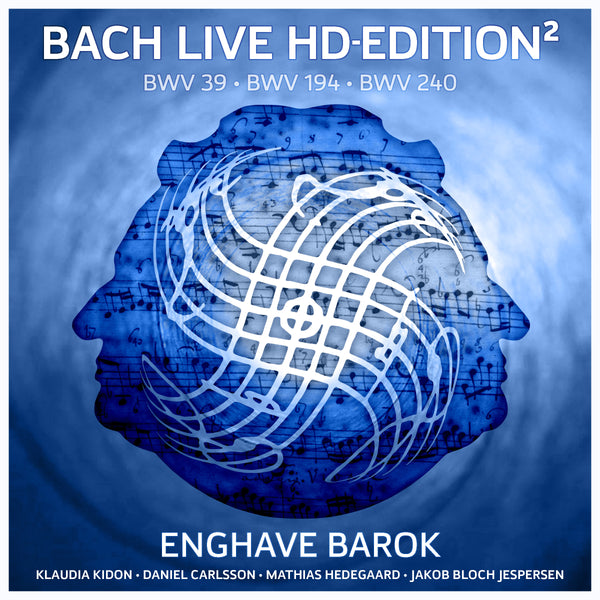"Ideal repertoire, tender playing, striking freshness and fluency and plenteous expertise from the ensemble”.
- Andrew Mellor, reviewer for Gramophone magazine
Klaudia Kidon - soprano
Daniel Carlsson - countertenor
Mathias Hedegaard - tenor
Jacob Bloch Jespersen - bass
Nina Fischer - ripieno sopran
Rececca Forsberg Svendsen - ripieno alt
Jakob Skjoldborg - ripieno tenor
Rasmus Kure Thomsen - ripieno bas
~
Louise Hjorth Hansen - 1. blokfløjte
Per Bengtsson - 1. obo
Aleš Ambrosi - 2. obo
Morten Kiernan - 3. obo BWV 194, 2. blokfløjte BWV 39
Jane Gower - fagot
Jesenka Balic Žunic - 1. violin
Jens Solgaard - 2. violin
Rastko Roknic - viola
Kjeld Steffensen - cello
Lars Baunkilde - violone
Christian Dehn Bang - Orgelpositiv
~
Total time: 63:45
Original recording format PCM 96kHz.
All other formats are converted versions of the original.
"The music of my father has higher purposes: it is not supposed to fill the ear, but to move your heart.”
- Carl Philip Emmanuel Bach
Enghave Barok
Enghave Barok’s intense performances of these cantatas, have gained worldwide acclaim from leading Bach specialists.
The ensemble's burning dedication to convey the many layers hidden in Bach's music, let the listeners explore Bach's universe, with the leading Scandinavian Bach ensemble as tour guides. And this high resolution download ensures that the best place is reserved for you, the listener, right in the sweet spot in front of the Enghave Barok Ensemble.

Johann Sebastian Bach's Cantatas are one of the greatest treasures in the history of music. These treasures are hidden in a wealth of maybe lesser-known works, but are never the less on par with Bach’s more well-known masterpieces. These Cantatas are full of jewels in the form of beautiful, moving and dramatic arias and choral works.
Cantata BWV 39
The opening chorus is a small masterpiece … (full paragraph content preserved) …
Cantata BWV 194
The standard pitch has changed a lot through music history … (paragraphs preserved) …
Sanctus in G, BWV 240
The origin of the Sanctus in G is doubtful … (paragraphs preserved) …
Enghave Barok, is an exciting new Scandinavian baroque ensemble consisting of the crème de la crème of Scandinavian baroque musicians.


